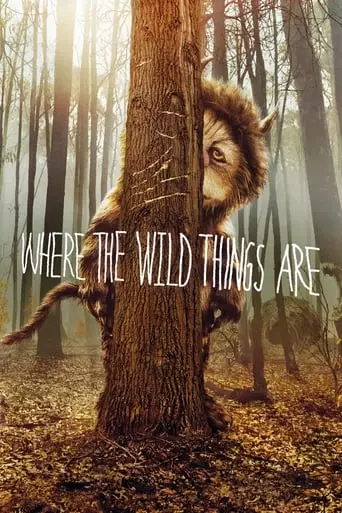Max imagines running away from his mom and sailing to a far-off land where large talking beasts—Ira, Carol, Douglas, the Bull, Judith and Alexander—crown him as their king, play rumpus, build forts and discover secret hideaways.
Where the Wild Things Are is a 2009 American fantasy drama directed by Spike Jonze, adapted from Maurice Sendak’s 1963 children’s book of the same name. The film follows Max, a young boy who, after a tantrum at home, sails to a mysterious island inhabited by large, expressive creatures known as the Wild Things. On this island, Max becomes their king, leading them through adventures and challenges that mirror his own emotional journey.
The narrative delves into Max’s inner world, exploring themes of loneliness, anger, and the desire for belonging. The Wild Things, each with distinct personalities, represent various facets of Max’s psyche and emotions. Through his interactions with them, Max confronts his feelings of neglect and seeks understanding and acceptance. The film’s pacing and tone reflect the contemplative nature of childhood, capturing the complexity of emotions experienced during this formative period.
Main Themes in Where the Wild Things Are
- Imagination as a Coping Mechanism: The film illustrates how children use imagination to navigate complex emotions and situations. Max’s journey to the island and his reign as king of the Wild Things serve as metaphors for his internal struggles and his quest for control and understanding in his life.
- The Complexity of Childhood Emotions: Where the Wild Things Are portrays the multifaceted nature of childhood feelings, including joy, anger, loneliness, and the longing for connection. The Wild Things embody these emotions, highlighting the challenges children face in processing and expressing their feelings.
- The Search for Belonging: Max’s desire to be loved and accepted is central to the narrative. His interactions with the Wild Things reflect his yearning for a place where he feels valued and understood, mirroring the universal human quest for belonging and community.
- The Transition from Fantasy to Reality: The film explores the delicate balance between fantasy and reality in a child’s life. Max’s adventures with the Wild Things ultimately lead him to recognize the importance of returning home, symbolizing the maturation process and the acceptance of reality.
Impact of Where the Wild Things Are
Upon its release, Where the Wild Things Are received critical acclaim for its artistic direction, emotional depth, and faithful adaptation of the source material. On Rotten Tomatoes, the film holds a 73% approval rating based on 270 reviews, with the consensus stating: Some may find its dark tone and slender narrative off-putting, but Spike Jonze’s heartfelt adaptation of the classic children’s book is as beautiful as it is uncompromising.
Critics praised the film for its visual storytelling and the nuanced portrayal of childhood emotions. Manohla Dargis of The New York Times noted that Jonze’s filmmaking exceeds anything he’s done before, highlighting the imaginative visuals and the film’s otherworldly feel.
However, some critics and audiences found the film’s pacing and tone to be challenging, particularly for younger viewers. David Denby from The New Yorker remarked, I have a vision of eight-year-olds leaving the movie in bewilderment. Why are the creatures so unhappy?
7 Reasons to Watch Where the Wild Things Are
- Visually Stunning Cinematography: The film’s cinematography captures the whimsical and emotional essence of the story. The lush landscapes and imaginative set designs immerse viewers in a world that feels both fantastical and tangible.
- Deep Emotional Resonance: Where the Wild Things Are delves into the complexities of childhood emotions, offering a poignant exploration of feelings such as loneliness, anger, and the desire for connection. This emotional depth makes the film relatable to audiences of all ages.
- Faithful Adaptation of a Classic Story: The film remains true to Maurice Sendak’s beloved book, capturing its spirit and themes while expanding upon them. This fidelity honors the original work and introduces its timeless messages to a new generation.
- Outstanding Performances: The cast delivers compelling performances, with Max Records portraying Max with authenticity and depth. The voice performances of the Wild Things, including James Gandolfini as Carol, add nuance and emotion to the characters.
- Thought-Provoking Themes: The film explores universal themes such as the search for belonging, the transition from fantasy to reality, and the complexity of emotions, prompting viewers to reflect on their own experiences and feelings.
- Unique Directorial Vision: Spike Jonze’s direction brings a distinctive and artistic flair to the film, blending elements of fantasy and reality in a way that is both imaginative and thought-provoking.
- Memorable Musical Score: The film features a hauntingly beautiful musical score by Karen O, which complements the narrative and enhances the emotional impact of the story.
How Will You Feel After Watching Where the Wild Things Are?
After watching Where the Wild Things Are, viewers are likely to experience a range of emotions, including nostalgia, introspection, and a renewed appreciation for the complexities of childhood. The film’s exploration of universal themes such as the desire for belonging and the navigation of complex emotions resonates deeply, leaving a lasting impression. The poignant storytelling and visual artistry may evoke a sense of wonder and reflection, prompting viewers to reconnect with their own inner child and the wild things within.

